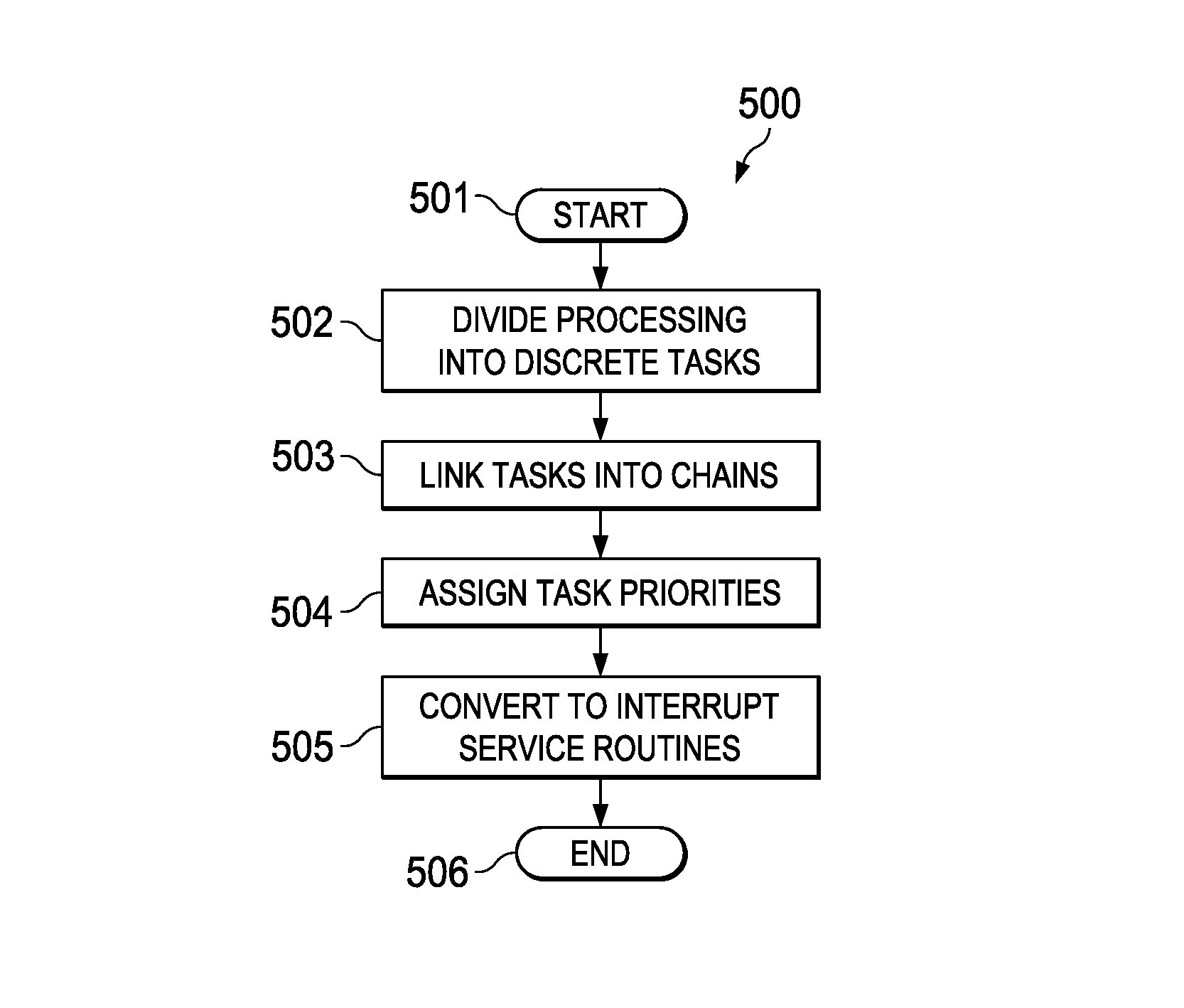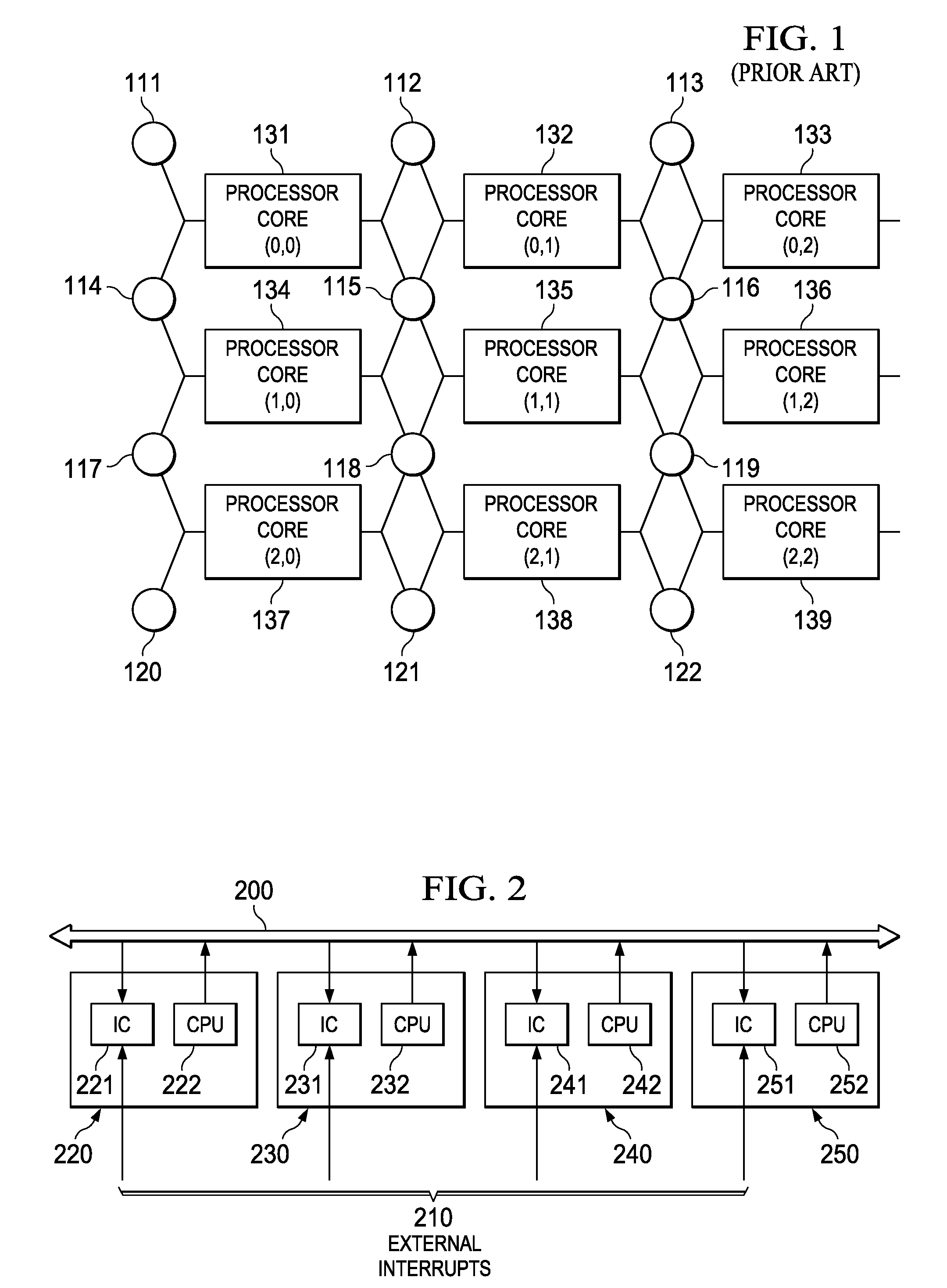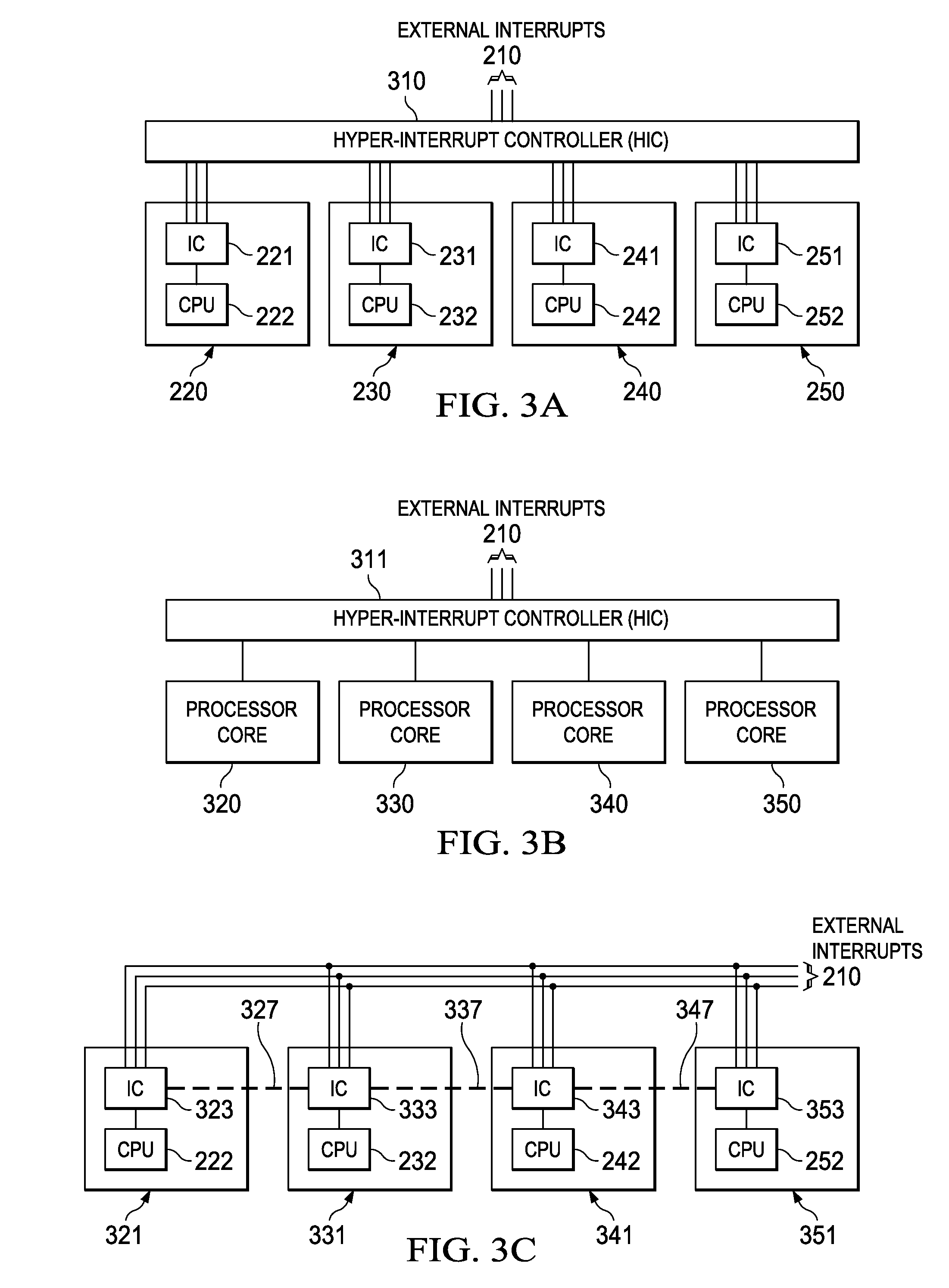Multi-core processing utilizing prioritized interrupts for optimization
a multi-core processing and priority technology, applied in the field of multi-processing, multiprocessing, factory multi-core and dsp multi-core, can solve the problems of high processor speed, memory speed often cannot keep pace with processor speed, and high processor speed requires deep pipelining, so as to maximize the utilization of data processor cores, minimize power consumption, and run more efficiently
- Summary
- Abstract
- Description
- Claims
- Application Information
AI Technical Summary
Benefits of technology
Problems solved by technology
Method used
Image
Examples
Embodiment Construction
[0016]This invention is a method and apparatus for factory multi-core data processor utilizing prioritized interrupts for optimization. This application describes numerous details to provide an understanding of the present invention. One skilled in the art will appreciate that one may practice the present invention without these details. This application does not describe some well known subject matter in detail to not obscure the description of the invention.
[0017]This invention is a multi-core system containing plural data processor cores interconnected with memory and peripherals in a single integrated circuit. The topology may be checkerboard, hierarchical, clusters or other forms. FIG. 1 illustrates the preferred checkerboard topology. This invention uses prioritized interrupts to add value to many forms of processing. The anticipated optimal use of this invention is not symmetrical multiprocessing (SMP) in the standard meaning. This invention anticipates that memory caches wit...
PUM
 Login to View More
Login to View More Abstract
Description
Claims
Application Information
 Login to View More
Login to View More - R&D
- Intellectual Property
- Life Sciences
- Materials
- Tech Scout
- Unparalleled Data Quality
- Higher Quality Content
- 60% Fewer Hallucinations
Browse by: Latest US Patents, China's latest patents, Technical Efficacy Thesaurus, Application Domain, Technology Topic, Popular Technical Reports.
© 2025 PatSnap. All rights reserved.Legal|Privacy policy|Modern Slavery Act Transparency Statement|Sitemap|About US| Contact US: help@patsnap.com



